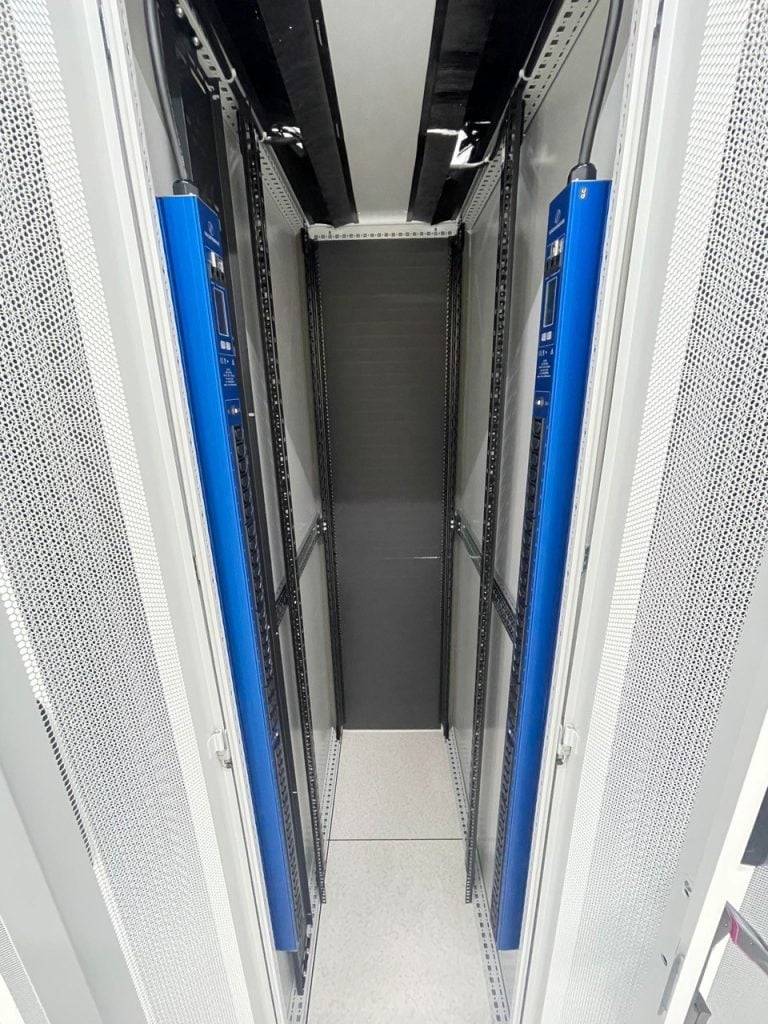Data center migration can feel like steering a massive ship through rocky waters. When done correctly, it unlocks agility, cost savings, and better performance.
But one misstep—missed dependency, compliance gap, or miscalculated budget—and your business risks costly downtime and data loss. This is where a meticulously crafted Data center migration checklist becomes your guiding star.
You’ve invested millions in your IT infrastructure, but outdated facilities, rising costs, or compliance demands are forcing a move. One wrong step in a data center migration can cause weeks of downtime, compliance fines, or catastrophic data loss.
This data center migration checklist walks you through every phase—planning to execution—in 2025’s toughest IT landscape.
Ready to transform your infrastructure with zero surprises? Contact Reboot Monkey today for a free consultation on your data center migration checklist!
Pre-Migration Planning
Ensure your migration is planned from the ground up with strategy, compliance, and feasibility.
A robust pre-migration phase lays the groundwork for success. Skipping this step is like building a house without a foundation. Here’s how to get it right.
Define Your Business Objectives
Every migration must be tied directly to your organization’s strategic goals. Ask yourself:
- What are our continuity targets? Uptime requirements should align with your business’s tolerance for downtime—whether 99.9% or 99.99%.
- How will we scale? Your new environment should accommodate growth in data volumes, user traffic, and application complexity.
- What’s the ROI? Project cost savings from improved energy efficiency, reduced maintenance, and potential tax incentives.
By establishing clear business objectives, your data center migration checklist moves beyond a technical exercise into a driver for growth. Use internal dashboards or our Business Continuity Guide to document KPIs for successful data migration.
Conduct a Risk Assessment
Risk is inevitable, but unmanaged risk is unacceptable. A thorough risk assessment identifies:
- Technical Risks: Hardware incompatibilities, network bottlenecks, or software version mismatches.
- Financial Risks: Budget overruns due to scope creep, customs duties (especially relevant for international moves like Data Center Relocation Amsterdam), and unplanned labor costs.
- Operational Risks: Downtime impacts on customer experience, supply chain disruption, and staff burnout.
For each risk, define a mitigation strategy: maintain spare hardware, secure vendor SLAs, or implement insurance. Document these in your data center migration checklist to track accountability and progress.
Budgeting and Cost Analysis
Transparent budgeting prevents nasty surprises. Your cost analysis should include:
- Visible Costs: Transportation, labor, new hardware leases, and software upgrades.
- Hidden Fees: Customs duties for cross-border moves, premium rush fees, and additional licensing costs.
- Downtime Costs: Calculate lost revenue per hour of downtime, factoring in SLA penalties.
Build an ROI model projecting the break-even point, so stakeholders see the long-term benefits of your migration. This step is critical in your data center migration checklist to secure executive buy-in.
Compliance and Regulatory Requirements
Adherence to data protection regulations is non-negotiable:
- GDPR: If you handle EU citizen data—crucial for Data Center Relocation Amsterdam—ensure personal data flows are documented and encrypted end-to-end.
- HIPAA: For healthcare data, validate that your new environment meets HIPAA’s physical and technical safeguard requirements.
- ISO Standards: ISO 27001 certification can streamline audit readiness.
Document every compliance checkpoint in your data center migration checklist, from data mapping to encryption standards, to quell auditor concerns.
Colocation Services in Yangon, Mandalay, and Naypyidaw | Reboot Monkey
Audit and Inventory
Catalog assets, software, and dependencies for a clear migration path.
A migration without knowing every component in play is a recipe for disaster. Comprehensive auditing and inventory ensure you don’t overlook critical assets.
Hardware and Software Inventory
Begin by listing:
- Physical Assets: Servers, storage arrays, network switches, firewalls, UPS units. Record make, model, serial number, power draw, and warranty status.
- Virtual Assets: Virtual machines, containers, cloud instances. Note CPU, memory, disk usage, and OS versions.
- Software Licenses: Application names, version numbers, license expiry dates, and support agreements.
This exercise populates your data center migration checklist and clarifies what moves, upgrades, or retires.
Dependency Mapping
Applications rarely operate in isolation. To ensure successful data migration:
- Map App Dependencies: Document databases, middleware, APIs, and third-party integrations.
- Visualization Tools: Use service-mapping tools like Dynatrace or AppDynamics to generate dependency diagrams.
- Critical Path Analysis: Identify components whose failure halts business functions.
Incorporate these maps into your data center migration checklist so teams understand interdependencies.
Performance Benchmarking
Before you move, measure:
- Compute Metrics: CPU utilization, memory usage, I/O operations per second (IOPS).
- Network Metrics: Latency, throughput, packet loss.
- Storage Metrics: Read/write speeds, queue depth, response times.
These benchmarks let you compare pre- and post-migration performance, ensuring you achieve—or exceed—your targets. Record all findings in your data center migration checklist.
Migration Strategy
Select the right strategy for your method, timeline, and goals.
Your chosen migration approach shapes timelines, budgets, and technical steps.
Choose a Migration Type
- Lift-and-Shift: Replicate your existing environment in the new location. Fastest option but may not optimize costs.
- Replatform: Migrate applications to updated platforms (e.g., virtualization upgrades or containerization) without rewriting code.
- Refactor: Redesign applications for cloud-native architectures—highest effort but maximizes scalability and cost-efficiency.
Weigh time-to-value against long-term benefits in your data center migration checklist. For many organizations, a hybrid approach—lift-and-shift for non-critical workloads and refactoring for business-critical apps—strikes the right balance for successful data migration.
Cloud vs. Physical Relocation Decision
- Cloud Migration: Delivers elasticity, pay-as-you-go pricing, and geographic redundancy. Beware of data egress costs and potential compliance gaps.
- Physical Relocation: Offers control over hardware, predictable costs, and, for projects like Data Center Relocation Amsterdam, proximity to local markets and low-latency connectivity.
Your decision will hinge on regulatory requirements, existing vendor contracts, and growth projections. Document your rationale in the data center migration checklist to keep stakeholders aligned.
Select a Migration Partner
Choosing the right partner can make or break your project. Evaluate vendors on:
- Track Record: Case studies of past Successful data migration projects in your industry.
- Certifications: ISO 27001, SOC 2, and local compliance attestations.
- Service Portfolio: Do they offer complementary services like Secure Hard Drive Destruction Service or paper shredding solutions branded We destroy paper documents securely and confidentially?
- Support Models: 24×7 monitoring, rapid incident response, and local on-site teams if needed.
Incorporate vendor selection criteria into your data center migration checklist to ensure consistency and transparency.
Security and Data Protection
Protect sensitive data during and after migration.
Security cannot be an afterthought. A comprehensive approach minimizes risk.
Implement Cybersecurity Protocols
- Encryption: Ensure data at rest uses AES-256 and data in transit uses TLS 1.3 or higher.
- VPNs and MFA: Secure remote connectivity to both origin and destination sites.
- Zero-Trust Architecture: Segment networks, enforce least-privilege access, and employ continuous monitoring.
List each security control in your data center migration checklist along with responsible parties and test dates.
Data Sanitization and Destruction
After migration, decommission old assets responsibly:
- Hard Drives: Engage a certified Secure Hard Drive Destruction Service to shred or degauss disks, ensuring zero data remnants.
- Paper Records: If you maintain physical logs or manuals, only a provider with a guarantee—like We destroy paper documents securely and confidentially—should handle the shredding.
- Certificates of Destruction: Obtain formal proof from providers to satisfy auditors and regulators.
Add these steps to your data center migration checklist under the “decommission” phase to close the loop on data security.
Backup and Disaster Recovery Planning
Strong backups are your safety net:
- 3-2-1 Backup Rule: Keep at least three copies of data on two different media, with one copy offsite.
- Test Restores: Regularly validate your backup integrity by performing trial restores.
- DR Site: Maintain a hot/warm/cold standby environment, depending on RTO and RPO requirements.
Document the backup schedule and test results in your data center migration checklist to verify your readiness.
Physical Relocation Planning
Plan transportation and handling for physical equipment securely.
A well-orchestrated move prevents damage and delays.
Logistics and Transport Coordination
- Specialized Transport: Select vendors experienced with heavy IT equipment—racks, UPS units, and freezers.
- Crating and Packaging: Use shock-absorbent pallets, anti-static wrapping, and climate-controlled containers if necessary.
- Scheduling: Plan moves during low-traffic windows (e.g., weekends or nights) to reduce business impact.
Include a detailed transport timeline in your data center migration checklist, listing vendor contacts and contingency plans for weather or customs delays.
Site Preparation and Infrastructure Readiness
Ensure the target site is turnkey:
- Power Infrastructure: Verify redundant UPS and generator capacity.
- Cooling Systems: Test CRAC units, aisle containment, and airflow management.
- Rack Layout and Cabling: Pre-install racks with cable trays, labeled runs, and patch panels.
Confirm each readiness check in your data center migration checklist to avoid last-minute scrambles.
Environmental Controls and Testing
- HVAC Validation: Monitor temperature and humidity for at least 72 hours before equipment arrival.
- Fire Suppression: Inspect pre-installed FM-200 or other inert gas systems.
- Grounding and Bonding: Use earth-tie testing tools to confirm proper grounding for each rack.
Record test results and thresholds in your data center migration checklist to certify a safe environment.
Execution and Implementation
Carry out the migration with real-time monitoring and checklists.
This is where your planning pays off. Stick to the script.
Final Pre-Migration Checklist
Before kicking off, verify:
- Backups Completed: Confirm successful backup and restore tests.
- Network Config: IP addresses, VLANs, firewall rules, and load-balancer settings.
- Team Roles: Assign migration leads, communication liaisons, and escalation contacts.
Tick off each item in your data center migration checklist to ensure go-no-go readiness.
Live Migration Execution
During the move:
- Monitoring Dashboards: Track data throughput, packet loss, and latency.
- Issue Tracking: Use a central ticketing tool (e.g., Jira) to log and resolve incidents in real time.
- Rollback Procedures: If performance or stability thresholds are breached, execute a pre-approved rollback plan.
Document migration logs and deviations in your data center migration checklist for post-mortem analysis.
Ready to execute your migration flawlessly? Schedule a free consultation with Reboot Monkey today!
Immediate Post-Migration Testing
Once systems are live:
- Functional Tests: Validate application access, batch processing, and user authentication.
- Performance Tests: Compare CPU, IOPS, and network metrics against benchmarks.
- Log Review: Scan system and security logs for errors or anomalies.
Update your data center migration checklist with test results and remedial actions.
Post-Migration Activities
Validate success, ensure optimization, and document everything.
Migration is only half the battle. The real value comes from optimization and knowledge transfer.
Performance Comparison and Optimization
- Analysis: Compare pre- and post-migration metrics side by side.
- Tuning: Adjust caching layers, load balancers, database indices, and QoS settings.
- Cost Optimization: Right-size instances or hardware to eliminate waste.
Record optimization steps and results in your data center migration checklist to demonstrate ROI.
Documentation and Reporting
Comprehensive documentation is your retention tool:
- Process Logs: Chronological record of actions, tools used, and issues encountered.
- Lessons Learned: Identify what worked, what didn’t, and recommended improvements.
- Executive Summary: High-level report for C-suite stakeholders highlighting success metrics.
Archive all documents with version control and index them in your data center migration checklist.
Team Training and Change Management
Equip your team for the new environment:
- Updated SOPs: Reflect new architectures, tools, and access procedures.
- Hands-On Workshops: Simulate common tasks—failover drills, patch management, capacity planning.
- Knowledge Base: Centralize articles, videos, and FAQs on your intranet or wiki.
Ensure training completion logs are filed under your data center migration checklist.
Sustainability and E-Waste Management
Ensure ethical disposal of equipment and compliance.
Responsible end-of-life practices protect your brand and the environment.
E-Waste Recycling Programs
Don’t dump old servers in landfills:
- Certified Recyclers: Partner with vendors accredited under R2 or e-Stewards standards.
- Reporting: Track weights, materials, and destinations for annual sustainability reports.
- Secure Hard Drive Destruction Service: Confirm data sanitization before recycling.
List recycler certifications and destruction certificates in your data center migration checklist.
Paper Document Disposal
Legacy paper records require secure handling:
- On-Site Shredding: Mobile shredding trucks that guarantee We destroy paper documents securely and confidentially.
- Chain of Custody: Document pickup, shredding times, and destruction certificates.
- Retention Policies: Only destroy documents after legal retention periods expire.
Include document destruction milestones in your data center migration checklist under “Compliance Tasks.”
Colocation Services in Brazil: Why Businesses Are Making the Shift | Reboot Monkey
Sustainable Infrastructure Planning
Green your new data center:
- Energy-Efficient Hardware: Choose Eco-certified UPS, chillers, and servers.
- Renewables and Certifications: Explore on-site solar or wind power and pursue LEED or Energy Star ratings.
- PUE Monitoring: Track Power Usage Effectiveness and aim for a PUE of 1.3 or lower.
Capture sustainability targets in your data center migration checklist to measure continuous improvement.
Common Mistakes to Avoid
Avoid critical missteps that can derail your project.
Even the best plans can fail without vigilance. Learn from others’ errors.
Underestimating Time and Resources
A rushed migration breeds chaos:
- Scope Creep: Additional workloads sneaking into the cutover window.
- Unplanned Overtime: Burned-out teams making mistakes under pressure.
Build generous buffers into your data center migration schedule to absorb unforeseen delays.
Ignoring Compliance and Security
Compliance lapses carry heavy fines:
Case Study: In March 2024, a financial services firm relocating its EU operations to a new facility in Amsterdam missed encrypting backup tapes in transit, resulting in a €200,000 GDPR fine after a data breach during Data Center Relocation Amsterdam.
Never treat compliance as an afterthought—embed it in every stage of your data center migration.
Failing to Communicate with Stakeholders
Silence breeds uncertainty:
- Business Units: Need clear timelines to adjust go-live plans and roll out new features.
- Vendors: Require precise cutover windows to align staffing and resources.
- End Users: Benefit from proactive updates on potential service disruptions.
Schedule regular status calls and bulletins. Document communication plans in your data center migration checklist.
Conclusion
Data center migration is one of the most complex undertakings an IT organization can face. Yet with our checklist, you’ll transform a daunting project into a series of manageable, measurable steps.
From defining business objectives and securing compliance for a Data Center Relocation Amsterdam, to executing a Successful data migration, and even responsibly destroying legacy assets with Secure Hard Drive Destruction Service and We destroy paper documents securely and confidentially—this guide covers it all.
Explore how Reboot Monkey’s end-to-end services—from planning to E-Waste Recycling Programs—can ensure your next data center migration is a resounding success.
Frequently Asked Questions (FAQs)
- Q: What is a data center migration checklist?
A: A data center migration checklist is a comprehensive roadmap outlining every step—from planning and risk assessment to execution and validation—needed for a smooth move. It ensures no critical task is overlooked, minimizing downtime and data loss. - Q: Why do I need a data center migration checklist?
A: Using a data center migration checklist helps align teams, budgets, and compliance requirements, reducing project risk. It provides clear accountability and tracks progress against milestones. - Q: How do I customize a data center migration checklist for my organization?
A: Start by defining your objectives and infrastructure specifics, then adapt checklist items—like asset inventory and security controls—to your environment. Tailor each phase in the data center migration checklist to your business goals. - Q: Can I use a data center migration checklist for cloud and hybrid moves?
A: Absolutely. A well-designed checklist covers on-prem, colocation, cloud, and hybrid scenarios, guiding you through vendor selection, data transfer, and post-migration validation. - Q: How often should I update my data center migration checklist?
A: Review and revise your data center migration checklist after each migration and annually to incorporate lessons learned, new technologies, and updated compliance standards. This keeps your process evergreen and effective.




